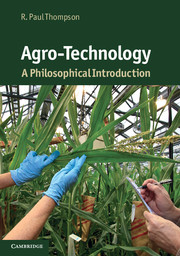Book contents
- Frontmatter
- Contents
- List of figures
- List of tables
- Preface
- Introduction
- 1 Scientific background
- 2 Application of genetics to agriculture
- 3 Philosophical and conceptual background
- 4 The controversy
- 5 The controversy
- 6 The controversy
- 7 The organic alternative
- 8 Impacts on low- and middle-income countries
- Concluding remarks
- Bibliography
- Index
2 - Application of genetics to agriculture
Published online by Cambridge University Press: 05 June 2012
- Frontmatter
- Contents
- List of figures
- List of tables
- Preface
- Introduction
- 1 Scientific background
- 2 Application of genetics to agriculture
- 3 Philosophical and conceptual background
- 4 The controversy
- 5 The controversy
- 6 The controversy
- 7 The organic alternative
- 8 Impacts on low- and middle-income countries
- Concluding remarks
- Bibliography
- Index
Summary
Genetic modification of plants and animals: techniques
Modifying an organism requires altering its DNA: adding, deleting or substituting a string of nucleotides that code for a trait in the mature plant, animal, bacterium or fungus. This can be done directly or by using a vector – an entity that will modify an organism's DNA. Both methods rely on the ability to cleave (cut) DNA at desired locations and ligate (join) pieces of DNA. When a vector is used, the modification is made to the vector's DNA; the vector then modifies the organism's DNA. Use of vectors is common in plant biotechnology, as it also is in medical and environmental biotechnology that involves modifying bacteria. I discuss below the use of an element in the bacterium Agrobacterium tumefaciens as a vector in plant modification. A virus, λ phage, that infects bacteria is commonly used to modify the DNA of bacteria in medical and environmental biotechnology.
- Type
- Chapter
- Information
- Agro-TechnologyA Philosophical Introduction, pp. 22 - 32Publisher: Cambridge University PressPrint publication year: 2011



